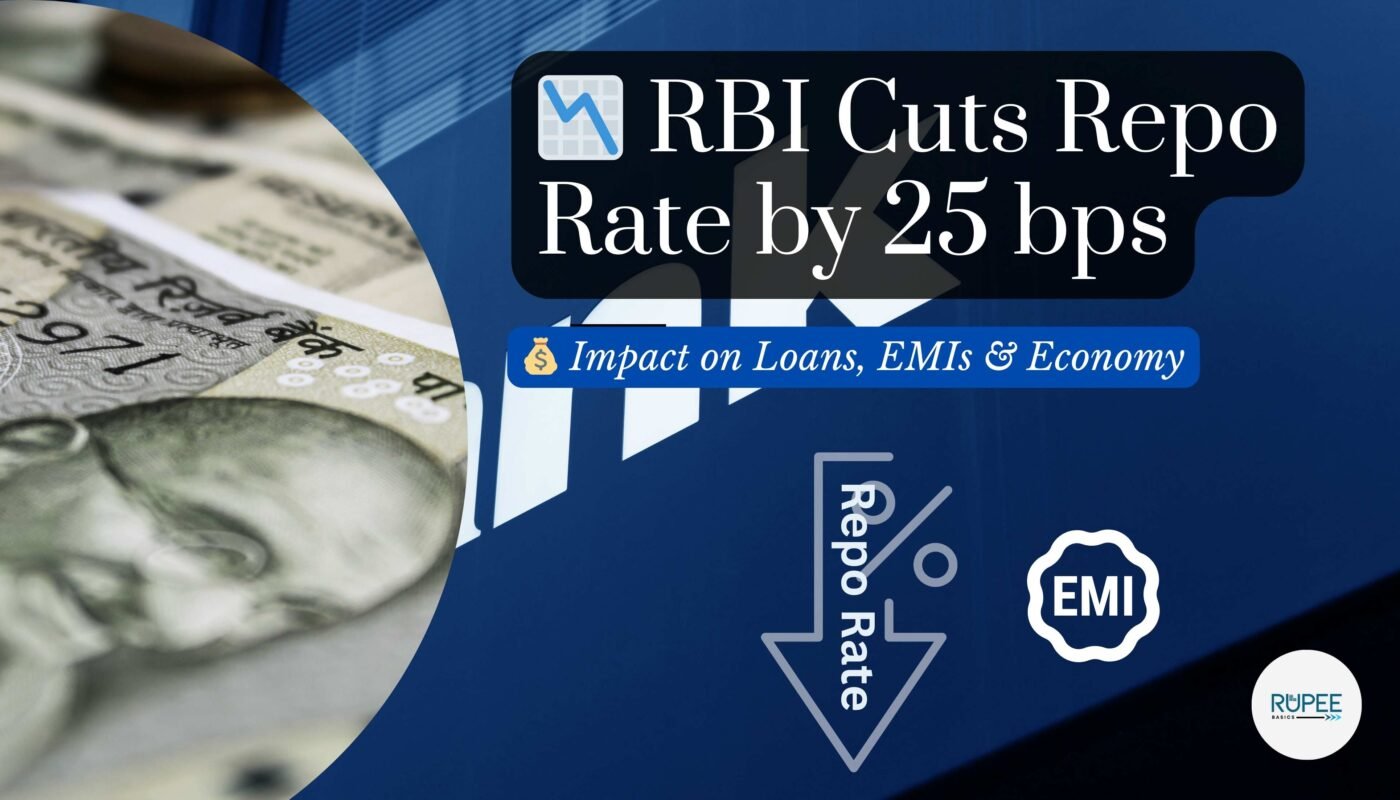📌 What is the Repo Rate?
The Repo Rate is the interest rate at which the Reserve Bank of India (RBI) lends money to commercial banks in exchange for government securities. In simple terms, when banks need funds, they borrow from RBI, and the interest they pay on that loan is the repo rate.
Today, the RBI reduced the repo rate by 25 basis points (bps). This means the rate has decreased by 0.25%, new Repo Rate will be 6.25%. This change will have an impact on loans, EMIs, savings, and the overall economy.
🔍 How Does a Repo Rate Cut Affect a Common Person?
✅ Lower Loan EMIs
A decrease in repo rate means that banks can borrow at a lower interest rate from the RBI. Banks may pass on this benefit to customers by lowering home loan, car loan, and personal loan interest rates. This leads to reduced EMIs, making borrowing cheaper for individuals.
✅ Cheaper Business Loans
Entrepreneurs and businesses can get loans at a lower rate, encouraging investment and economic growth.
✅ Lower FD and Savings Account Interest Rates
While loans get cheaper, fixed deposit (FD) and savings account interest rates may also reduce. This is because banks earn less from lending and may cut deposit rates to balance their profits.
✅ Boost to Economy and Jobs
Lower interest rates encourage spending and investments, which help businesses grow, leading to job creation and economic development.
🏦 How Does a Repo Rate Cut Affect Banks?
📉 Lower Borrowing Cost for Banks
With a reduced repo rate, banks can borrow from RBI at a cheaper rate. This helps them maintain liquidity and lend more to businesses and individuals.
📉 Reduced Lending Rates
Since banks borrow at a lower rate, they are likely to lower interest rates on loans, making credit cheaper.
📉 Impact on Profit Margins
Lower lending rates can impact bank profitability, especially if they cannot reduce deposit interest rates proportionately.
📉 Encourages Lending
When borrowing is cheaper, banks lend more to individuals and businesses, boosting overall financial activity in the country.
🔥 How Repo Rate Impacts Inflation
- A lower repo rate encourages borrowing and spending, which can boost demand and potentially increase inflation.
- A higher repo rate makes borrowing expensive, reducing spending and controlling inflation.
🏛 RBI’s Role in Monetary Policy
- The RBI adjusts the repo rate as part of its monetary policy to maintain economic stability.
- Understanding the relationship between CRR (Cash Reserve Ratio), SLR (Statutory Liquidity Ratio), and Repo Rate is essential for tracking economic changes.
🔄 Repo Rate vs Reverse Repo Rate
- Repo Rate: The rate at which RBI lends money to banks.
- Reverse Repo Rate: The rate at which RBI borrows money from banks to absorb excess liquidity.
📊 How Repo Rate Affects Different Sectors
- 🏠 Real Estate: Lower rates make home loans cheaper, boosting property demand.
- 📈 Stock Market: Lower rates encourage investment, leading to a bullish market.
- 🚗 Automobile Industry: Easier loans lead to increased car sales.
📜 History of RBI Repo Rate Changes
The RBI repo rate has fluctuated over the years based on economic conditions. Below are some key changes:
- 2008-09: The repo rate was significantly reduced due to the global financial crisis to boost economic recovery.
- 2013-14: It was increased to control inflation.
- 2019: A series of rate cuts to stimulate the economy after the slowdown.
- 2020: The rate was lowered drastically to support the economy during the COVID-19 pandemic.
- 2024: The latest cut of 25 bps reflects RBI’s effort to encourage borrowing and investment.
🔮 Expert Opinions and Future Predictions
- Economists predict that further rate cuts could happen if inflation remains under control.
- Market analysts believe that banks will gradually pass on the benefits to customers.
- Future repo rate changes depend on global economic conditions and domestic inflation trends.
💡 Tips for Borrowers and Investors
- 🏡 Should you prepay your home loan? If rates continue to fall, floating-rate borrowers may benefit by not prepaying immediately.
- 📈 Where to invest? If deposit rates drop, consider mutual funds, stocks, or government bonds for better returns.
❓ FAQs
1️⃣ What is the current repo rate after the 25 bps cut?
If the previous repo rate was 6.50%, after a 25 bps cut, the new rate would be 6.25%.
2️⃣ How soon will banks reduce loan interest rates?
It depends on the banks. Some may pass on the benefit immediately, while others may take time to adjust rates.
3️⃣ Will my existing loan EMI reduce automatically?
If you have a floating interest rate loan, your EMI may reduce. Fixed-rate loans will remain unchanged.
4️⃣ Should I invest in FDs now?
With a rate cut, FD interest rates may decrease. If you want better returns, consider investing before banks lower deposit rates.
5️⃣ Why does RBI change the repo rate?
RBI adjusts the repo rate to control inflation, boost economic growth, and stabilize financial markets.
“Believe you can, and you’re halfway there.” – Theodore Roosevelt
📢 Need Expert Help with Finance & Taxation?
Get professional assistance on Taxation, Business Registration & Compliance. 🔗 Contact Us for expert guidance! 🚀




